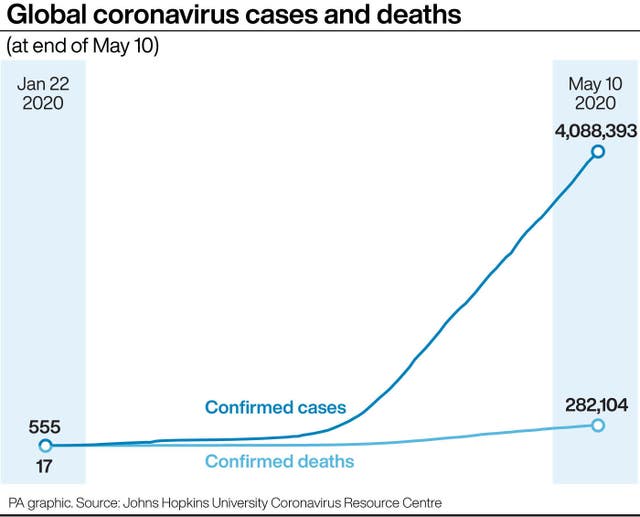Plastic barriers and face masks appeared on the streets of Europe’s newly reopened cities, as France and Belgium emerged from lockdowns, the Netherlands sent children back to school and Greece and Spain further eased restrictions.
All faced a delicate balance of trying to restart battered economies without fuelling a second wave of coronavirus infections.
Social distancing was the order of the day but just how to do that on public transport and in schools was the big question.
With Monday’s partial reopening, the French did not have to carry forms allowing them to leave their homes but crowds quickly developed at some metro stations in Paris, one of France’s viral hotspots.

Antoinette van Zalinge, principal of the De Notenkraker elementary school in Amsterdam, wore a wide white skirt and a hula hoop slung from her shoulders and carried a long stick with a hand at one end so she could shake hands with students while still keeping 1.5 metres (5ft) apart.
In Paris, hairdressers practised their new workflow over the weekend ahead of Monday’s reopening, and planned to charge a “participation fee” for the new disposable protective gear they will need for each customer.
Walk-in customers will be a thing of the past, said Brigitte L’Hoste, manager of the Hair de Beaute salon, who expects the number of appointments to be cut in half.
“The face of beauty will change, meaning clients won’t come here to relax. Clients will come because they need to,” said Aurelie Bollini, a beautician at the salon.
“They will come and aim at getting the maximum done in the shortest time possible.”

Its biggest cities of Madrid and Barcelona remained under lockdown, however.
Fears about new waves of infection have been born out in Germany, where a new cluster was linked to a slaughterhouse; in Wuhan, the Chinese city where the virus started; and in South Korea, where a single nightclub customer was linked to 85 new infections.
The South Korean government pushed back hard against that wave, halting the school reopenings that had been planned for this week and reimposing restrictions on nightclubs and bars.
It is now trying to track 5,500 people who had visited a popular Seoul entertainment district by checking credit card transactions, mobile phone records and security camera footage.
“We’re going to have to learn to live with the virus,” health minister Olivier Veran said.
The hurdles ahead for tourism and the service industries were clear, even in places where infections are diminished.
Shanghai Disneyland reopened to visitors, but let in limited numbers and demanded that they wear face masks and have their temperatures checked.
“We hope that today’s reopening serves as a beacon of light across the globe, providing hope and inspiration to everyone,” Shanghai Disney Resort president Joe Schott told reporters.
US treasury secretary Steven Mnuchin predicted the American economy would rebound in the second half of this year from unemployment rates that rival the Great Depression.
Another 3.2 million US workers applied for jobless benefits last week, bringing the total over seven weeks to 33.5 million unemployed.
The US has seen 1.3 million infections and nearly 80,000 deaths, the most in the world by far, according to a tally by Johns Hopkins University.
Worldwide, four million people have been reported infected and more than 280,000 have died, over 150,000 of them in Europe.

India reported its biggest daily increase in coronavirus cases as it prepared to resume train services to ease a lockdown that has hit migrant workers especially hard by eliminating the daily wages they use to feed their families.
The government reported 4,213 new cases for a total of more than 67,000, including 2,206 deaths.
The railway system is India’s lifeline, transporting 23 million people across the vast subcontinent each day.

While unemployed workers in developed nations are temporarily buoyed by benefits and job protection schemes, millions elsewhere are facing dire economic prospects.






